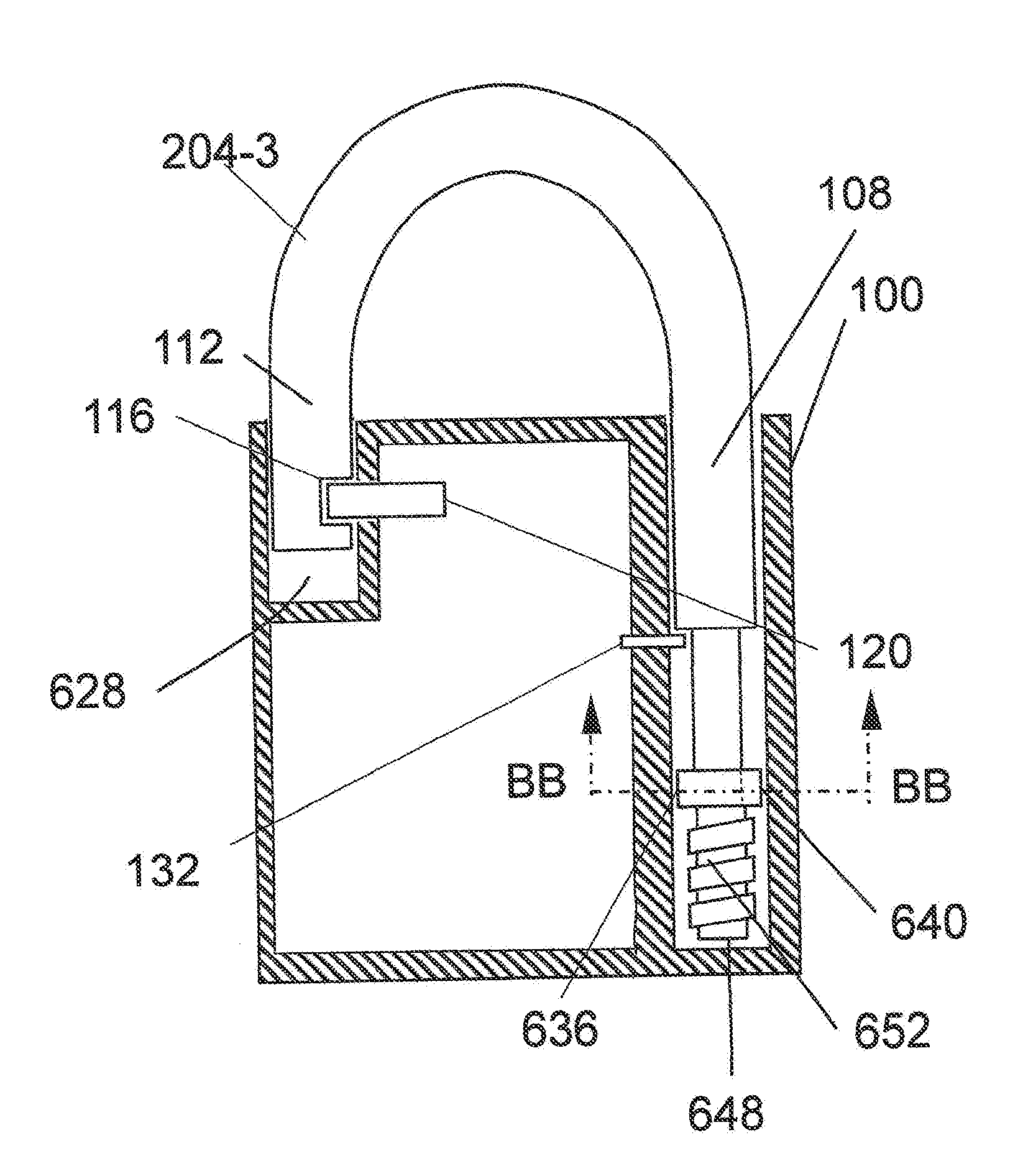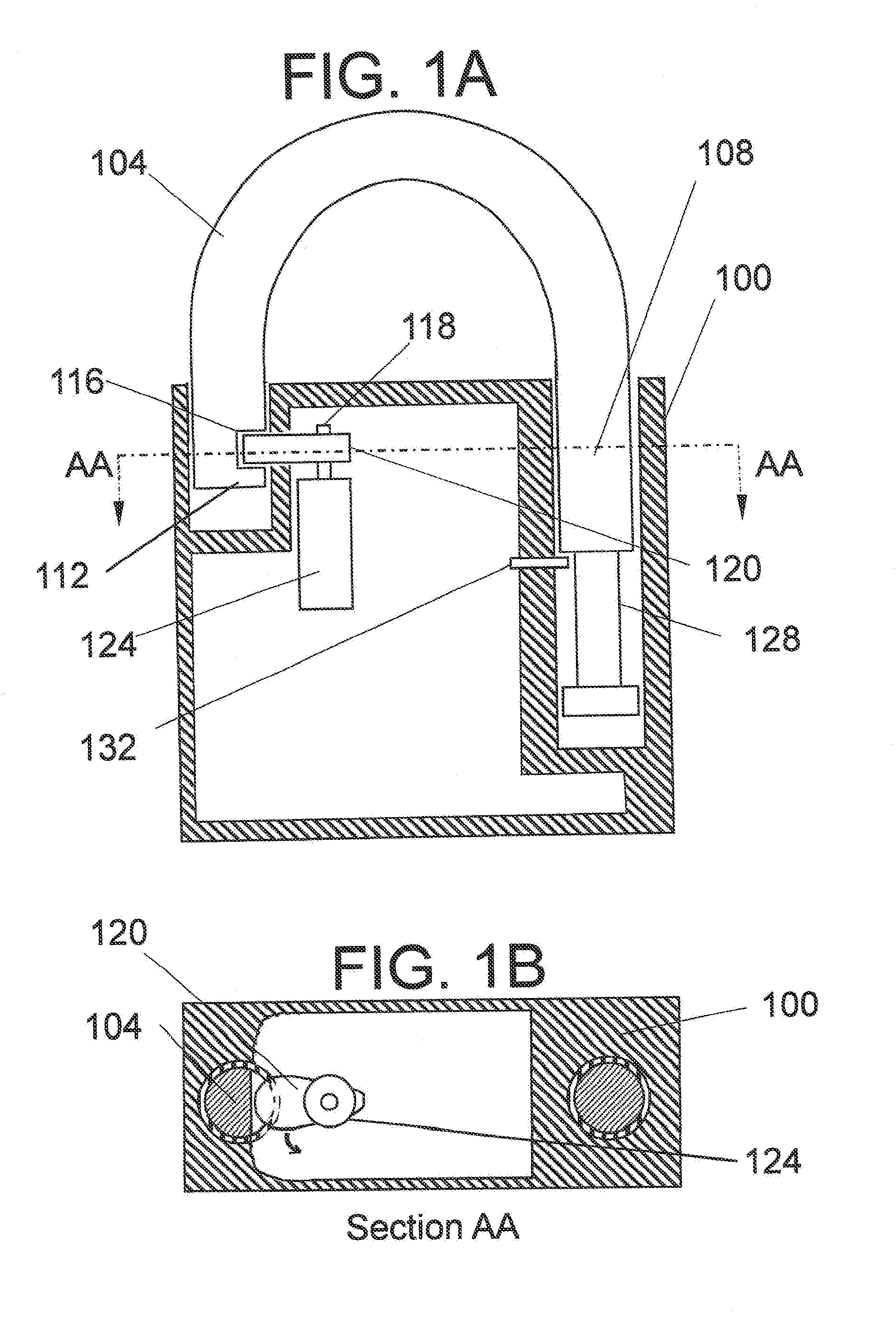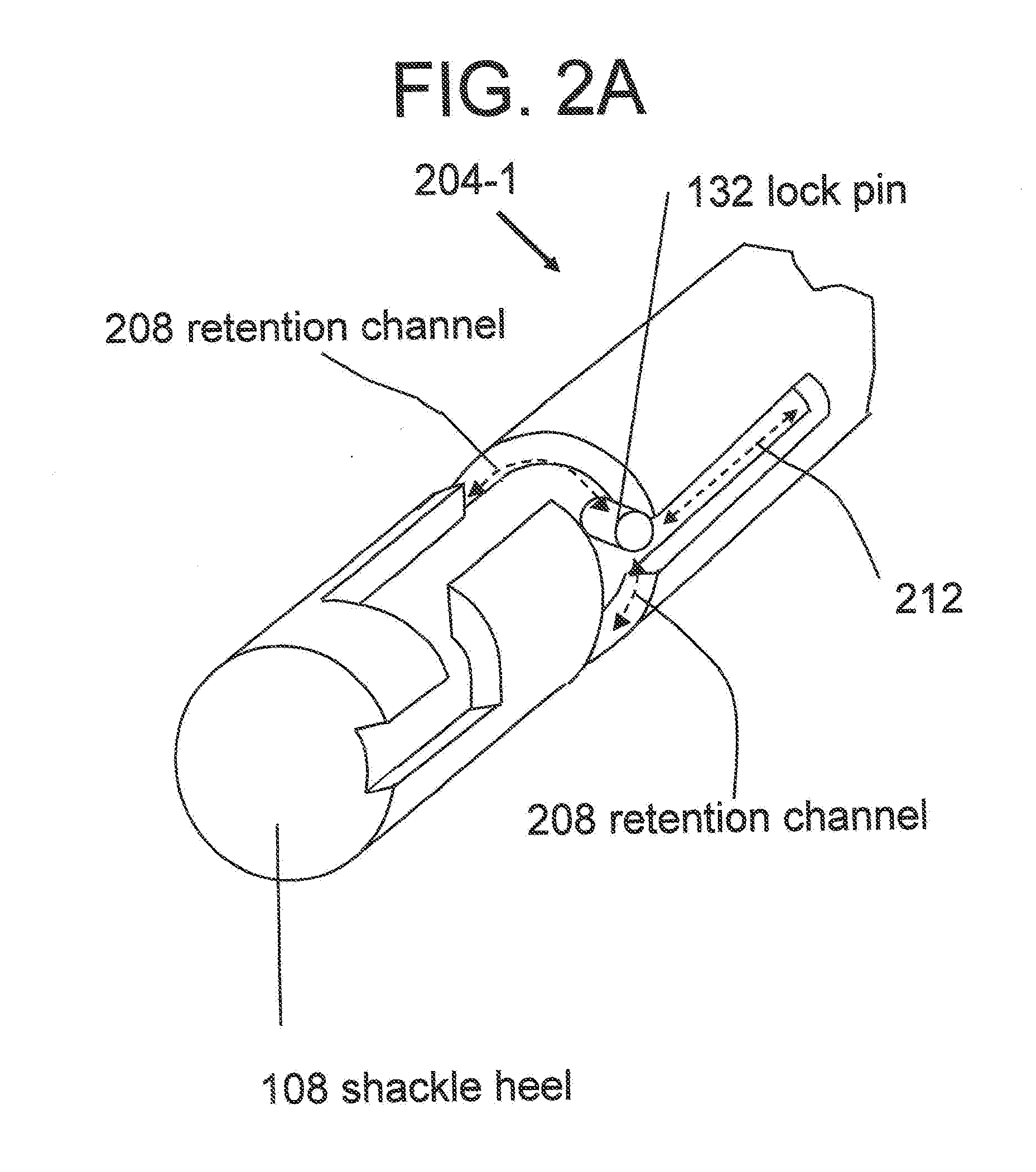Replacement Shackle for Portable Lock
a portable lock and replacement shackle technology, applied in padlocks, building locks, constructions, etc., can solve the problems of inability to pay, old concept of cutting off the lock and purchasing a replacement is no longer an acceptable solution, and the replacement rate is reduced, so as to reduce the amount of key changing and duplication, the effect of reducing the replacement ra
- Summary
- Abstract
- Description
- Claims
- Application Information
AI Technical Summary
Benefits of technology
Problems solved by technology
Method used
Image
Examples
first embodiment
[0066]The shackle 204-2 has four (4) shackle extraction cams 224. Each shackle extraction cam 224 adds a one hundred and eighty (180) degree rotation of the shackle 204-2 that must be performed to insert or remove a first embodiment shackle 204-2.
[0067]More or less shackle extraction cams than the four shown in FIG. 3 may be included in the shackle 204-2, the exact number being constrained only by the limits imposed by the lock body 100 length and the embodiment one shackle 204-2 length. The shackle lock pin 132 is the component that controls rotational and vertical movement of the first embodiment shackle 204-2 within the lock body 100.
[0068]FIG. 4A illustrates construction aspects and components of the heel 108 portion of this version of the first embodiment shackle 204-2. The first embodiment shackle 204-2 is manufactured using e.g. steel, an alloy of multiple metals, plastic, nylon, or any other material having sufficient manufacturing characteristics. One possible method of man...
second embodiment
[0096]FIG. 7 depicts the same portable lock previously referred to as lock body 100 in FIGS. 1A and 1B. These FIGS. 1A and 1B are borrowed but modified into FIG. 7 which is intended to help demonstrate the
[0097]FIG. 7 again shows the basic cable shackle lock body 100 which is used as the basis for modifications to provide a useful replaceable cable shackle product. It is important to demonstrate how both the first and second embodiments relate to the common lock body 100 as previously discussed. While acknowledging the differences in the two (2) solutions, this disclosure maintains focus upon how to apply each to a common solution consisting of the merger of the common lock body 100 and the two differing shackle embodiments.
[0098]Renumbering changes and the rationale behind them are: The references to the shackle type previously identified as “first embodiment shackles 204” which is intended to be manufactured of rigid materials were removed and a second embodiment cable shackle ass...
third embodiment
[0110]For convenient reference, the third embodiment will be divided into three sub-embodiments, which will be labeled shackle 904-1, shackle 916-2, and shackle 916-3. The shackle 904-1 is shown with FIG. 9A, the shackle 916-2 is shown within FIG. 9B, and shackle 916-3 is shown within FIGS. 9C-9D.
[0111]When locks of this sort without the capability to remove shackles are assembled, the shackle 904-1 is inserted and then a small C-clip or similar retainer 908 is inserted into a groove cut into the third embodiment shackle 904. If an attempt is made to extract the shackle 904, the C-clip or similar retainer 908 will prevent passage of the shackle 904-1 so that it is unable to pass thru the shackle mounting bracket 912. The fact that the lock is not repairable for such a simple problem becomes more problematic as many small locks of this sort utilize technology including but not limited to BlueTooth® and biometric fingerprint scanning. Small locks in this category can sell for e.g. $75...
PUM
 Login to View More
Login to View More Abstract
Description
Claims
Application Information
 Login to View More
Login to View More - R&D
- Intellectual Property
- Life Sciences
- Materials
- Tech Scout
- Unparalleled Data Quality
- Higher Quality Content
- 60% Fewer Hallucinations
Browse by: Latest US Patents, China's latest patents, Technical Efficacy Thesaurus, Application Domain, Technology Topic, Popular Technical Reports.
© 2025 PatSnap. All rights reserved.Legal|Privacy policy|Modern Slavery Act Transparency Statement|Sitemap|About US| Contact US: help@patsnap.com



